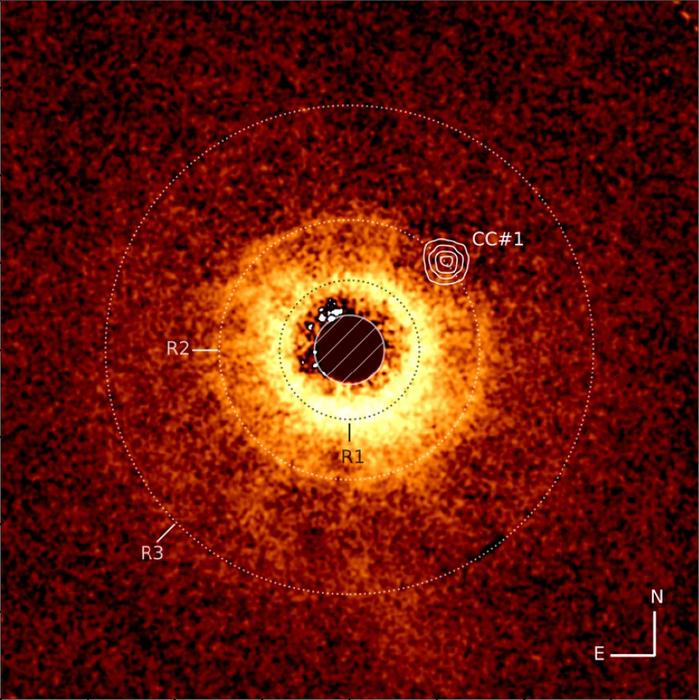The James Webb Space Telescope has discovered its 1st exoplanet and snapped its picture (image)
The new planet TWA 7b is also the lightest exoplanet ever to be directly imaged.

After three years of helping astronomers investigate known planets beyond the solar system, the James Webb Space Telescope (JWST) has discovered its first new planet.
The extrasolar planet, or "exoplanet," which has been designated TWA 7b, also happens to have the lowest mass of any planet that has been directly imaged beyond the solar system. With an estimated mass of around 100 times that of Earth or 0.3 times the mass of Jupiter, TWA 7b is ten times lighter than any exoplanet previously directly imaged.
TWA 7b was discovered in the debris rings that surround the low-mass star CE Antilae, also known as TWA 7, located around 111 light-years from Earth. CE Antilae is a very young star, estimated to be around just a few million years old. If that seems ancient, consider the sun, a "middle-aged" star, is around 4.6 billion years old.
CE Antilae, discovered in 1999, has long been a system of great interest to astronomers because it is seen "pole-on" from Earth. That means the disk of debris or "protoplanetary disk" that surrounds CE Antliae is seen 'from above' (or 'below'), revealing its full extent.
This has allowed astronomers to see structures in this disk that appear to have been created by the gravity of then-unseen planets and planetesimals, the "seeds" which gather mass to grow into full planets.

The disk of CE Antilae is divided into three distinct rings, one of which is narrow and bounded by two empty "lanes" mostly devoid of matter.
When imaging this ring, the JWST spotted an infrared-emitting source, which the team of astronomers determined is most likely a young exoplanet. They then used simulations that confirmed the formation of a thin ring and a "hole" exactly where this planet is positioned, corresponding to JWST observations.
Breaking space news, the latest updates on rocket launches, skywatching events and more!
The JWST is the ideal instrument to detect young low-mass planets like TWA 7b, which emit infrared radiation, the type of light the $10 billion space telescope is most sensitive to.
Directly imaging these planets is difficult because they are drowned out by light from their parent stars. The JWST is equipped with a coronagraph that blocks out the light from central stars, allowing the faint infrared emissions of orbiting exoplanets to be detected by its Mid-Infrared Instrument (MIRI).
That means, though this is the lowest mass planet ever imaged and the first exoplanet discovered by the JWST, it's a safe bet that the powerful space telescope will discover many more planets as it images even lighter worlds.
The team's research was published in the journal Nature.

Robert Lea is a science journalist in the U.K. whose articles have been published in Physics World, New Scientist, Astronomy Magazine, All About Space, Newsweek and ZME Science. He also writes about science communication for Elsevier and the European Journal of Physics. Rob holds a bachelor of science degree in physics and astronomy from the U.K.’s Open University. Follow him on Twitter @sciencef1rst.
You must confirm your public display name before commenting
Please logout and then login again, you will then be prompted to enter your display name.
